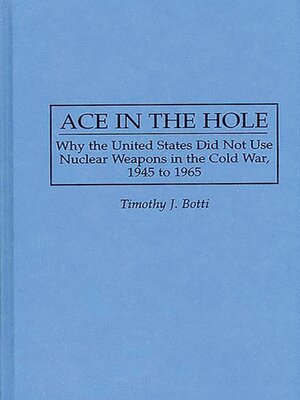Ace in the Hole
ebook ∣ Why the United States Did Not Use Nuclear Weapons in the Cold War, 1945 to 1965 · Contributions in Military Studies
By Timothy J. Botti

Sign up to save your library
With an OverDrive account, you can save your favorite libraries for at-a-glance information about availability. Find out more about OverDrive accounts.
Find this title in Libby, the library reading app by OverDrive.



Search for a digital library with this title
Title found at these libraries:
| Library Name | Distance |
|---|---|
| Loading... |
Using newly released documents, the author presents an integrated look at American nuclear policy and diplomacy in crises from the Berlin blockade to Vietnam. The book answers the question why, when the atomic bomb had been used with such devastating effect against the Japanese Empire in 1945, American leaders put this most apocalyptic of weapons back on the shelf, never to be used again in anger. It documents the myopia of Potomac strategists in involving the U.S. in wars of attrition in Korea and Southeast Asia, marginal areas where American vital interests were in no way endangered. Despite the presence of hundreds, then thousands of nuclear bombs and warheads in the nation's stockpile, the greatest military weapon in history became politically impossible to use. And yet overwhelming nuclear superiority did serve its ultimate purpose in the Cold War. When American vital interests were threatened—over Berlin and Cuba—the Soviets backed down from confrontation. Despite errors in strategic judgment brought on by fear of Communist expansion, and in some cases outright incompetence, the ace in the hole proved decisive.







